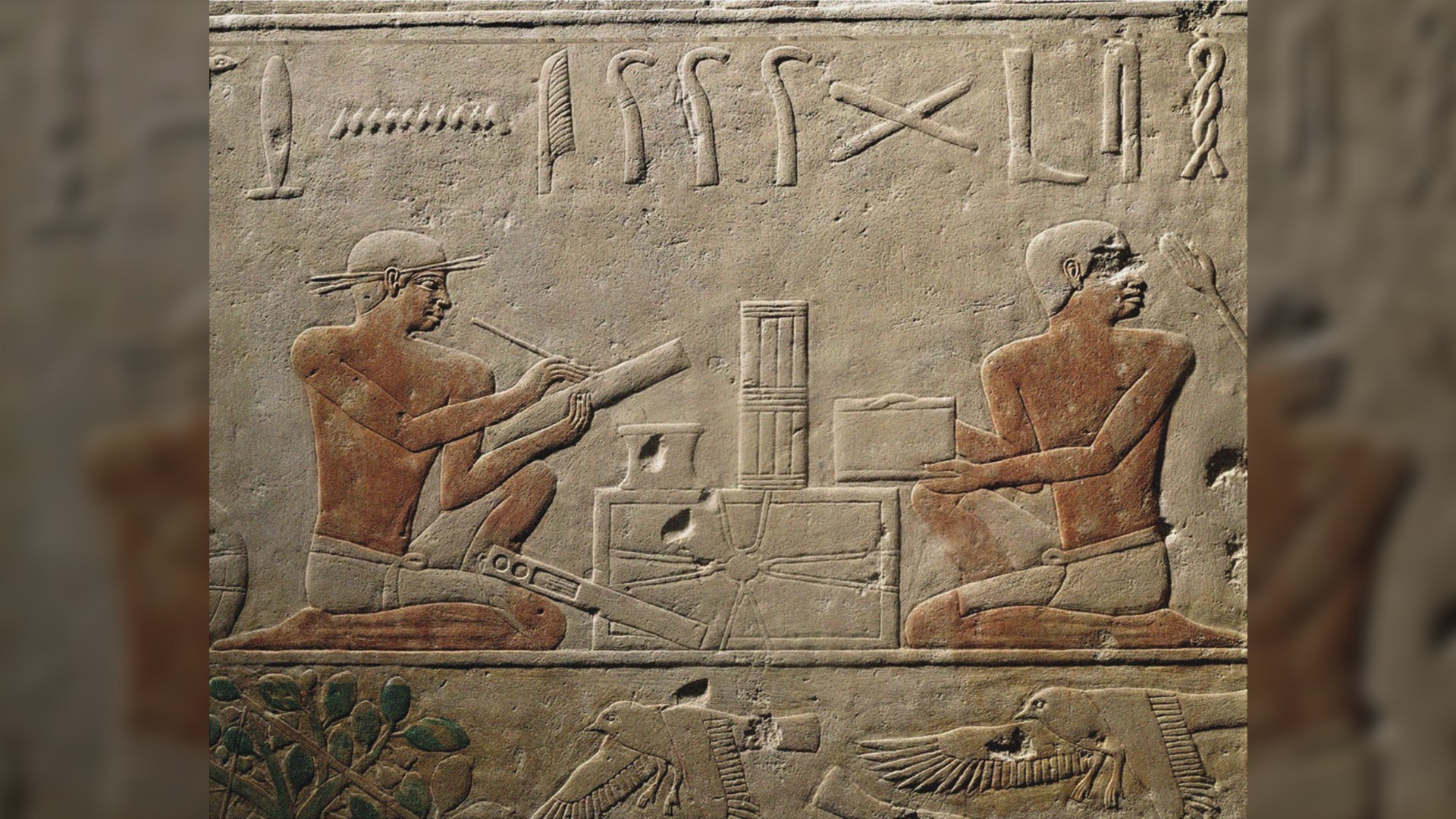In 1986, the band “The Bangles” sang about “all the aged paintings on the tombs” exactly where the figures they depict are “walking like an Egyptian.” While he was neither an artwork historian nor an Egyptologist, songwriter Liam Sternberg was referring to a single of the most placing capabilities of historic Egyptian visual artwork — the depiction of men and women, animals and objects on a flat, two-dimensional plane. Why did the ancient Egyptians do this? And is ancient Egypt the only culture to develop art in this design and style?
Drawing any object in 3 proportions requires a particular viewpoint to generate the illusion of perspective on a flat floor. Drawing an object in two dimensions (peak and breadth) demands the artist to depict just 1 area of that item. And highlighting just one particular surface, it turns out, has its advantages.
“In pictorial representation, the define carries the most information,” John Baines, professor emeritus of Egyptology at the University of Oxford in the U.K. informed Dwell Science. “It is really easier to realize something if it is described by an define.”
Associated: What did historic Egypt’s pharaohs stash inside of the pyramids?
When drawing on a flat surface area, the outline turns into the most crucial function, even even though a lot of Egyptian drawings and paintings incorporate particulars from various sides of the object. “There is also a terrific concentration on clarity and comprehensibility,” Baines claimed.
In numerous creative traditions, “measurement equals value,” according to Baines. In wall artwork, royalty and tomb entrepreneurs are usually depicted considerably larger than the objects surrounding them. If an artist were to use a 3-dimensional perspective to render human proportions in a real looking scene with a foreground and background, it would go towards this basic principle.

The other motive for depicting numerous objects on a flat, two-dimensional aircraft is that it aids the generation of a visible narrative.
“One particular only has to assume of [a] comedian strip as a parallel,” Baines said. There are extensively acknowledged ideas that manage how historic Egyptian visual art was developed and interpreted. “In origin, composing was in vertical columns and shots had been horizontal,” Baines stated. The hieroglyphic captions “give you information that is not so conveniently set in a image.” More often, these scenes don’t represent true functions “but a generalized and idealized illustration of lifetime.”
Nevertheless, not all pictorial representation in historical Egypt was purely two-dimensional. In accordance to Baines, “Most pictorial artwork was positioned in an architectural environment.” Some compositions on the walls of tombs bundled aid modeling, also identified as bas relief, in which a largely flat sculpture is carved into a wall or mounted onto a wall. In the tomb of Akhethotep, a royal formal who lived during the Fifth Dynasty around 2400 B.C., we can see two scribes (demonstrated beneath) whose bodies are sculpted into the flat surface of the wall. As Baines spelled out, the “reduction also designs the system area so you can’t say that it is really a flat outline” simply because “they have texturing and floor element in addition to their outlines.”
In many examples courting as considerably again as 2700 B.C. in the Early Dynastic Period of time, artists painted on best of a relief to incorporate even additional depth, as witnessed in the image of the two scribes down below.

Egyptian visible art applied “more or considerably less universal human methods to representation on a flat surface,” Baines reported.
“It [Egyptian art] influenced artwork in the historic In the vicinity of East,” such as historic Syrian (or Levantine) and Mesopotamian artwork, Baines said. The very same conventions can be observed in many other ancient traditions of artwork. Maya artwork also utilizes pictorial scenes and hieroglyphic script. Whilst classical Greek and Roman art is an exception, there are even illustrations of comparable creative conventions for two-dimensional drawing and portray from medieval Europe. As Baines explained, “It is a process that performs quite well and so you will find no have to have to improve it.”
Originally published on Dwell Science.
